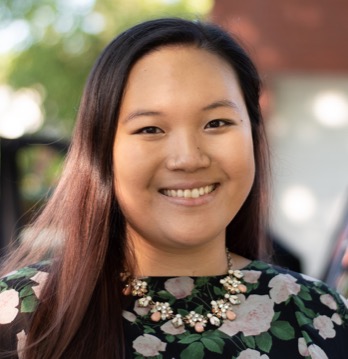CRS Scientist Spotlight on Luhan Tracy Zhou
The ability to be able to connect, network, and engage with so many scientists and clinicians has allowed me to flourish as a student and reproductive scientist.
Luhan Tracy Zhou, MS
Luhan Tracy Zhou is an alumna of the MS-RSM program and is currently a research associate in the Duncan Lab as well as a technician at Lurie Children's. Her work covers a variety of projects across reproductive science. Learn more about her work and her time at CRS below.

What brought you to join the CRS community and what is your current position?
I joined the CRS community when I matriculated into the Master of Reproductive Science and Medicine program in the fall of 2016. Currently, I am a research associate in the Duncan lab where I serve as the operations lead for the Ovarian Contraceptive Discovery Initiative (OCDI). I also serve as a gonadal tissue processing technician for the Fertility & Hormone Preservation & Restoration Program (FHPR) at Lurie Children’s.
Could you describe what your work entails?
- As a research associate, I work on various research projects in the lab. More specifically, I’m working on a pediatric oncofertility project in collaboration with the Laronda lab and the FHPR program. I also perform and organize research specifically for project 2 of the OCDI, which focuses on harnessing oocyte maturation biology for the ultimate goal of identifying novel targets for non-hormonal contraceptive development.
- As the operations lead for the OCDI, I oversee milestones and goals for all projects across multiple institutions. I also lead meetings, experimental plans, initiative executions, and maintain our website.
- As a gonadal tissue processing technician, I process pediatric ovaries immediately post-surgical removal into cortical strips. I prepare de-identified and donated tissue/media for research. Finally, I complete slow-freeze of isolated ovarian cortical tissue for long-term storage according to FDA & IRB approved protocols.
I truly love the community that the CRS has built over the last 30+ years. This is a community filled with experts across many disciplines within and outside of reproductive science and medicine, and at all academic and career levels. The ability to be able to connect, network, and engage with so many scientists and clinicians has allowed me to flourish as a student and reproductive scientist. The continual growth the center has taken on is also inspiring. More specifically, I am particularly excited about all of the sub-committees the center has and all of the opportunities provided to trainees, staff, and faculty. There is never a dearth of events and opportunities to engage with the center, and to make an impact in our field and beyond.
What has been the most valuable aspect to your work in reproductive science?
It’s hard to say which is more important than the other so I will list two of the most valuable aspects I have found in my reproductive science work. The first being the empowerment I feel with all of the knowledge I continue to accrue. I am a life-long learner and research is the perfect field to continually learn, whether that be emerging technologies in the field or digging deep into the history to understand how we arrived at what we know as fact present day. The second most valuable aspect to my work is collaboration. They always say that two brains are better than one and that could not be truer than in science. Over the last five years since joining the CRS I have seen just how important and crucial it is to be collaborative and also how exciting it is for multiple disciplines to come together. Our lives outside of the lab are multidisciplinary, and I’m a firm believer that research should be as well.
What would you recommend to students and young professionals in order for them succeed in their careers?
Follow your curiosity and passions! Growing up I had an exact idea of what I imagined my career path to look like and I could not be farther from that present day, and it’s a good thing. The more career path seminars I attend, the more I realize that few have followed a direct career path. I feel very fortunate and privileged to have been able to pursue what interests me the most all these years, and because of that, I’m excited and happy doing what I do as a scientist. No matter what stage in your career you’re at, finding joy in what you do and/or seeking out opportunities that fill you with excitement is the best advice I have taken and the advice I encourage students and young professionals to consider for their careers.
What do you think will be the next big contribution in the reproductive biology field?
I feel that the next big thing on the horizon for the reproductive field, actually most fields, is artificial intelligence and machine learning. It really feels that we’re in the midst of a paradigm shift in how/what we’re capable to extrapolating from the data we’re collecting. Harnessing the power of technology and machine learning can one day (hopefully) provide unbiased analysis, increase the capacity of datasets examined, and perhaps explore criteria that cannot be detected with current techniques/technologies.
What hobbies do you have outside of the lab?
Outside of the lab I am a photographer & event planner, I prefer to be outdoors (either camping, hiking, kayaking, etc.), I am an avid dancer/choreographer, musician (piano, violin, guitar), and mom to two wonderful furbabies (Charlie the cat & Nikki the puppy).